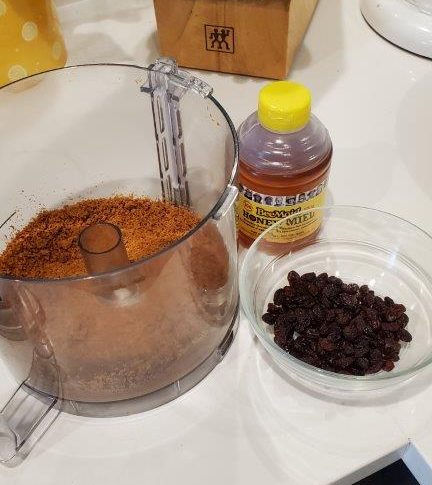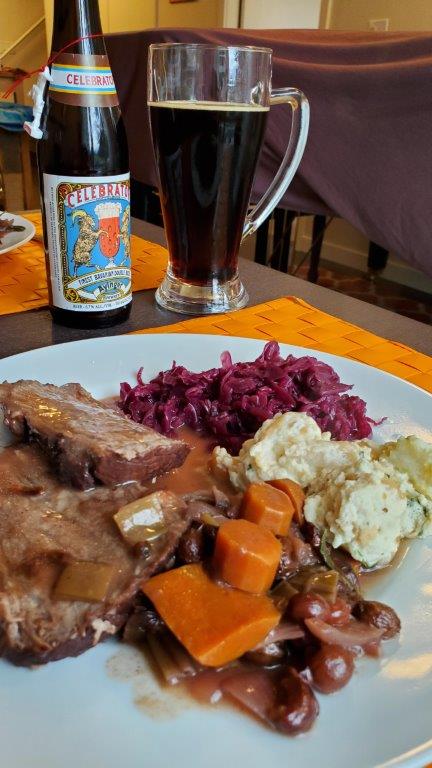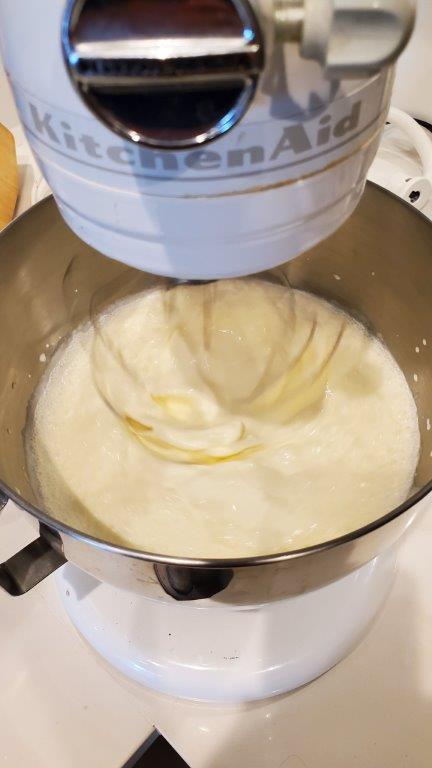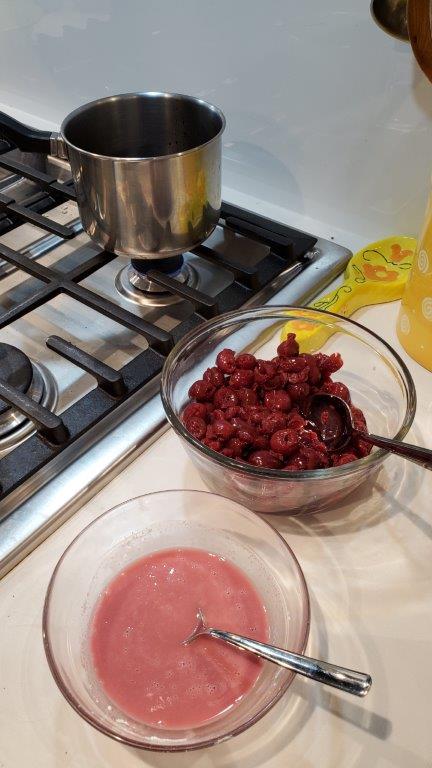It’s been a few weeks, both since our last post, and since we made this meal. Our hosting provider decided that we were too small potatoes to justify keeping around, and so we’ve been moving a bunch of websites, email, and other stuff.
But speaking of potatoes…
…which would be a great segue if this meal had actually contained potatoes, but surprisingly enough for a German meal, it didn’t. Instead we made Sauerbraten, an iconic German dish with rather a long lead time. Five days before the meal, we made a marinade of veggies, vinegar, red wine, and spices:
This gets cooked just a bit to soften everything up, and then in goes the roast:
That goes in the fridge until Sunday, with a periodic flip to make sure both all sides get fully flavored.
On meal day, we made two side dishes and a dessert. The level of continuous effort involved was REMARKABLY high when you consider that “making” one of the side dishes consisted of opening this jar of cabbage.
However, all will become clear when we get to talking about the dessert. In the meantime, my colleague Stephan was kind enough to provide his family recipe for Semmelknödel, or bread dumplings. In theory, they should be made with stale German rolls, but what we found were more like standard dinner rolls. We got them a few days ahead of time, but I suspect they still needed to be a bit drier than they were.
The cut up rolls get soaked with milk and left to sit for a bit. Meanwhile you cook some onions in butter, because it’s a recipe, so of course you have to cook onions in fat at some point. Our second potential mistake crops up here – I’m willing to bet we didn’t mince the onions finely enough. At any rate, you mix the onions with some parsley, and then pour that and a beaten egg over the bread chunks. That gets formed into dumplings.
And the dumplings get boiled in water until they firm up.
Ours only got semi-firm. I think we may have gotten the liquid / solid ratio wrong as a result of using the wrong kind of buns. That said – they were still TASTY, I’m just not sure we did them justice.
Meanwhile, the final cook on the sauerbraten was proceeding. You pull everything out of the pot, and separate the meat, the liquid, and the vegetables. First, you brown the meat by itself. Then you pull the meat out of the pot and brown the veggies and some flour in the same oil.
Finally you add the liquid back in along with the meat, honey, raisins, and… wait for it… crushed gingersnaps!
The gingersnaps apparently act as a thickening agent, as well as providing flavor. That all cooks for a few hours, and then you pull the roast out and cook the gravy down until it’s the desired thickness.
Interestingly, the recipes I looked at all call for discarding the vegetables at this point. I was a bit puzzled by that – aren’t they tasty? I asked Stephan, and he said the concern is food safety – they frequently aren’t cooked with the raw meat, but they are marinated with it, so the habit is apparently to either make a fresh batch of veggies, or just not bother with them.
We decided that since we had cooked the veggies with the meat for two solid hours, they were probably safe, so we plated them with the sliced roast, gravy, dumplings and cabbage. And a nice doppelbock to go with.
Sauerbraten, I am pleased to report, is delicious. Sweet and sour and hearty. The dumplings clearly have potential, and hopefully we will do a better job of getting them a bit more solid next time. On the whole, a great meal.
And that’s it. What could I have forgotten?
Oh right – dessert.
In the classic tradition of “idiots who watch the GBBO and think ‘how hard could it be?'”, we decided to make a Black Forest cake.
Step one – make a sponge. This involves beating lots of air into lots of things and carefully mixing them together. Here’s some action shots.
One of those is actually from later, but they made such a nice triptych I couldn’t resist. Upon baking, the sponge is allowed to cool and sliced into three equal pieces. Equal-ish. Semi-equal.
OK, not equal.
You also have to make a sour cherry syrup using a mix of cherries, cherry juice, corn syrup, and in theory, Kirsch. However, it turns out Kirsch (a cherry liqueur) is super duper expensive, so we left it out. It made the cake a little drier than it should have been, but $40 CAD for a one-use ingredient was hard to justify.
A note on those cherries – I went to three different stores looking for the right kind of sour cherries with no luck, so I finally bought a can of regular cherry pie filling, which isn’t right AT ALL, but would have been something.
Then I walked over to my little neighborhood grocery store because we were out of butter, and they had the right kind. Sigh. At least we got them!
Then, assembly happens! Cake, cherries, whipped cream, cake, cherries, whipped cream, grated chocolate and more cherries. It was a colossal mess. It was also an honest-to-goodness Black Forest cake.
We may not be getting a handshake from Paul for the effort, but it really was tasty.
And that’s Germany! Internet gods willing, hopefully Ghana will be coming up in the near future.
Recipes:
Sauerbraten
Black Forest Cake
(I don’t have permission to share the dumpling recipe, but you can find other recipes for the dish online.)















